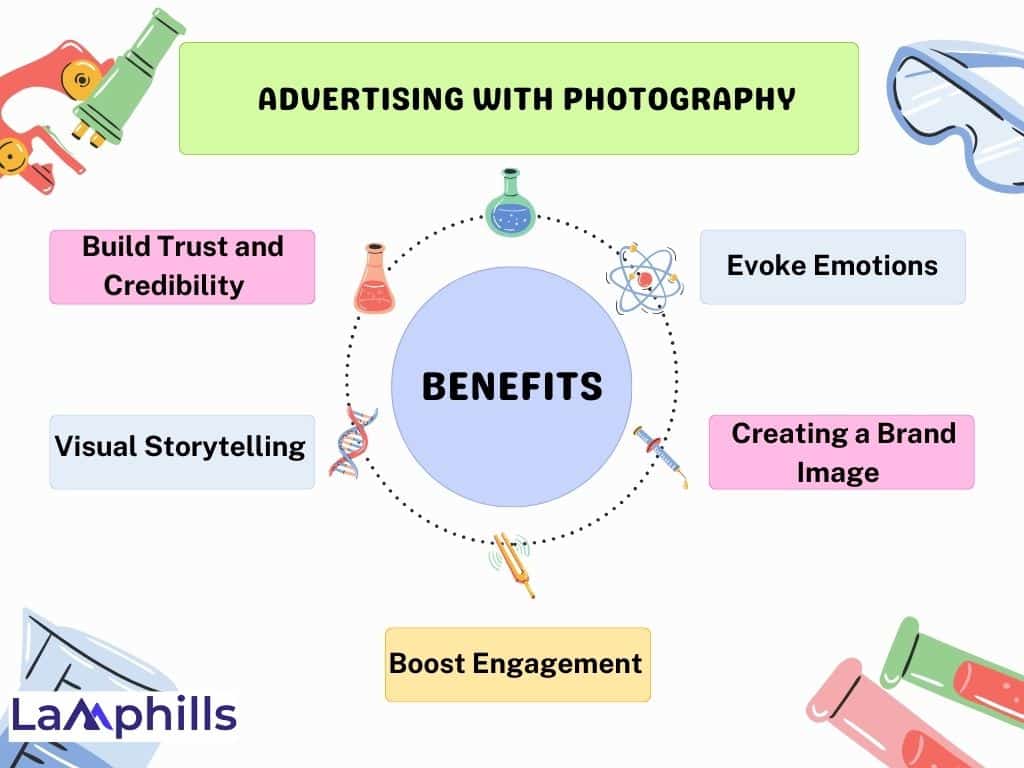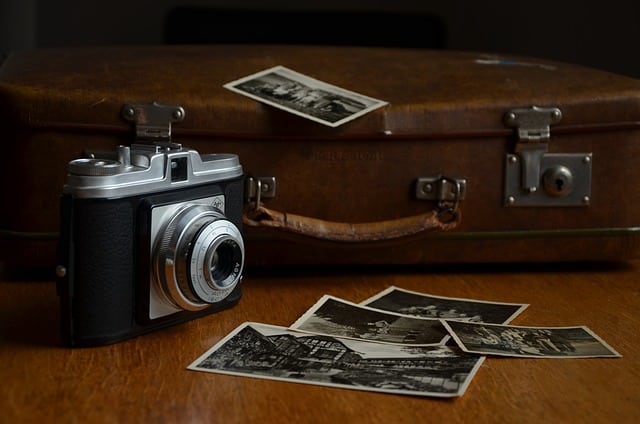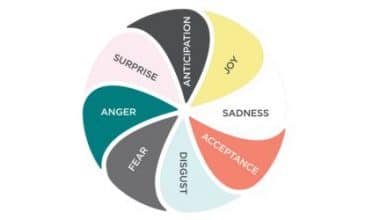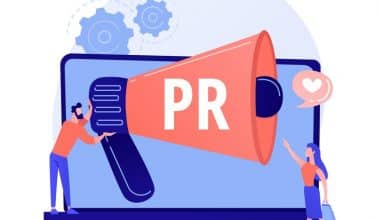When it comes to creating content that grabs attention, advertising photography plays a key role. Powerful images can tell a story, capture interest, and connect with your audience in ways that words alone can’t.
I remember scrolling through social media one day when an ad suddenly caught my eye. It wasn’t the words or the headline that made me stop, it was the picture. The photo showed a cozy living room with soft lighting, a nice couch, and a family spending time together. Just from looking at the picture, I felt like I wanted to be in that room, even before I knew what the ad was for. It made me realize how powerful photos are in ads and how just one image can make a simple product look really appealing
Including a picture in an ad can boost how much people remember it by up to 65%. If you cut corners and don’t use a professional photographer, your phone photos or stock images could give potential customers a cheap or unprofessional vibe.
In this article, we’ll explore the role of photography in advertising, looking at how the two work together. Keep reading to learn the power of photography in advertising, and the benefits to your campaigns including tips for creating effective photography ads.
Key Points
- A Picture is Worth a Thousand Words.
- Great photography isn’t just about showing products—it tells a story that people can relate to.
- Eye-catching images grab attention instantly, making your ads stand out and helping convey messages quickly.
- Professional photography adds credibility to your brand, making it look more trustworthy and appealing.
- Powerful images connect emotionally with your audience, driving actions like purchases or shares.
- Well-composed, professional photos lead to higher engagement, more clicks, and ultimately, more conversions.
The Visual Power of Advertising Photography
The old saying, “A picture is worth a thousand words,” is true. You can create an ad campaign with brochures, billboards, emails, and online ads. You can even hire the best writer. But without eye-catching images, it’s hard to grab people’s attention, let alone convince them to buy your products.
Advertising photographers know how to take great photos and use psychology to make people feel like they need your brand. The photographer must understand your style and the message you want to share through your ads.
You might think only big companies with huge budgets can afford high-quality ads, but that’s not true. Small businesses and non-profits can get great results too by investing time and resources. By hiring the right photographer, you can achieve success without spending a fortune.
Especially in today’s digital age, where people quickly lose interest and brands compete for attention, your marketing needs to stand out quickly. This is where advertising photography comes in. A well-made photo can instantly share ideas, emotions, and messages, helping you connect with your audience right away.
What Is The Relationship Between Photography and Advertising?
We’ve all had those moments when we scroll through an app or a website, and something catches our eye. What makes us stop? More often than not, it’s the image. Before we even read the text, our eyes are drawn to the visuals, and that’s to say that photography has the unique ability to grab attention immediately.
I’ve noticed that the ads I’m more likely to engage with are the ones with striking images. Whether it’s a beautifully shot landscape or a crisp photo of a product, good photography can make an ad stand out in a sea of content. First impressions matter, and in the world of advertising, the right image can be the difference between someone scrolling past or clicking to learn more.
A successful advertising campaign depends on eye-catching images, and photography often plays a big role in making that happen. People are naturally drawn to visuals, and with thousands of ads thrown at them every day, it’s easy to feel overwhelmed. You only have a split second to grab their attention.
In advertising, visuals are important for convincing people they need what you’re offering, even if they didn’t think so at first. This is done by creating images that stand out from other ads and show how your product or service can improve their life, make them happier, or create a memorable experience.
Benefits of Advertising With Professional Photography

What role does photography play in advertising? It’s about hope and inspiration, like the image of a small track star smiling widely as they cross the finish line in front of a packed stadium, arms stretched out. It’s also about grit and determination, captured in the photo of someone working hard in a dim gym, lit by a single light as they push through another set of squats. Both are wearing athletic gear. Can you guess the brand? Nike. Just do it.
Photography in advertising grabs the attention of consumers. It builds a brand image and a setting that makes people feel like they want to be part of it. In marketing, visuals have the most power.
Here are a few reasons why hiring a professional photographer for your ads can improve both your campaign and your company.
#1. Building Trust and Credibility
Using professional photography helps make your brand look more trustworthy and professional. High-quality pictures show that you pay attention to details, which reflects well on your products or services. When people trust your brand, they’re more likely to become customers. According to a study by the Nielsen Norman Group, people focus on high-quality images, showing that good visuals play a big role in building trust online.
#2. Evoking Emotions
Good advertising photos can make people feel something. They can make your audience laugh, cry, or feel motivated. When people feel connected, they are more likely to take action. Emotions play a big part in the choices we make, so it’s important to use photos that connect with your audience’s feelings. Whether it’s buying a product, signing up for a service, or sharing a post, emotions help drive those decisions.
#3. Visual Storytelling
Great advertising isn’t just about selling a product; it’s about telling a story. Photography helps brands tell stories that connect with people on an emotional level.
Visual storytelling is a strong tool in photography advertising. It involves using photos to tell a story or share a message, helping create an emotional bond between the audience and the photo. This makes it easier to communicate a brand’s message. The idea of ‘less is more’ in photography means that a single image should allow viewers to bring their own thoughts and experiences to it, drawing them into the intended mood.
For example, environmental photography can be used in ads to show people using or benefiting from a product or service while telling a story or sharing the brand’s main message. A great example of visual storytelling is Dimitri Daniloff’s work for PlayStation, which shows the limits of humanity through images of fragmented bodies.
#4. Creating a Brand Image
When selling a product, people connect with the brand, not just the product. Even if your product is amazing, the way to stand out from the competition is by building a brand image that feels welcoming and relatable.
Advertising photography helps showcase your products or services in settings that your audience can relate to. It’s about creating a picture of how your product fits into an ideal life, making it a key part of a successful marketing campaign.
#5. Focusing on Quality
Customers mainly want a good product. If your assistant quickly learns some iPhone camera tricks right before a photoshoot, chances are your product won’t look very appealing.
A professional photographer, however, makes your brand stand out. By using good lighting, angles, and framing, they highlight the features of your product that make people want to buy it. Clear, sharp, and well-detailed photos reassure customers that your products are high-quality.
#6. Boosting Engagement
Would you want to spend days planning, budgeting, and running an ad campaign that gets no attention? Probably not. A professional photographer provides you with a powerful engagement tool – strong brand images.
Photos can grab customers’ attention and encourage them to read more of your ad. They’re also more likely to interact with your ad, whether it’s leaving a comment on a social media post or clicking a call-to-action (CTA) button. Engagement is great for your brand and helps build loyal customers.
Types of Photography in Advertising
There are three main kinds of photography used in advertising: product photography, lifestyle photography, and conceptual photography. Each one serves a specific purpose and helps businesses make a strong impression on their audience.
- Product photography highlights the product itself, often taken in a studio.
- Lifestyle photography shows people using the product in real-life situations, making it feel more relatable to the viewer.
- Conceptual photography is more creative, using unique ideas and visuals to send a message or evoke emotions, leaving a lasting impact.
#1. Product Photography
Product photography is a type of photography that focuses on showing products in an attractive way to boost sales. For example, beauty photography highlights how a product can make someone look better or solve a specific problem.
The goal of this type of photography is to show how a product can help the customer. This is often done by placing the product in a real-life setting that makes sense. This helps the photographer create an emotional connection with the viewer, making them more likely to buy the product.
#2. Lifestyle Photography
Lifestyle photography is a type of picture-taking that shows real-life moments, events, or special occasions. The goal is to capture natural, everyday moments in a way that feels both professional and relatable, giving a glimpse into daily life.
This style of photography is often used in ads to tell a story and create an emotional connection. For example, Nike’s “Just Do It” campaign used action shots of athletes to show the brand’s energy, and Apple’s “Shot on iPhone” campaign featured regular people taking amazing photos with their iPhones.
#3. Conceptual Photography
Conceptual photography is a style of photography that focuses on expressing an idea or message through images, rather than just showing what’s in the picture. The goal is to make viewers think or feel something deeper through the visuals.
By using conceptual photography, brands can create images that spark emotions and stick with people. Examples of successful campaigns include Apple’s “Shot on iPhone” and Nike’s “Just Do It,” both of which made a big impact in their industries.
Tips for Creating Effective Photography Ads
Making good photography ads takes some thought and attention to detail. Here are three basic tips to help you create effective ads: picking the right image, focusing on composition and lighting, and ensuring consistency.
#1. Choosing the Right Image
Picking the right image for photography ads is key to their success. The image should look good, match the product or service being promoted, and connect emotionally with the target audience.
To make sure the image works well, think about how it looks, how it relates to the product, and whether it can stir emotions in the audience. Choosing the right image helps businesses create ads that speak to their audience and boost sales.
#2. Composition and Lighting
How a photo is arranged and lit is very important in photography ads. These elements help make the image eye-catching and emotional. Using the rule of thirds, which divides the image into three parts horizontally and vertically, can help balance the photo and highlight key elements.
Different lighting methods, like natural light, artificial light, backlighting, or side lighting, can create different moods and atmospheres. By carefully arranging the photo and using lighting, businesses can make their ads stand out and leave a lasting impression.
#3. Consistency and Cohesion
Keeping your ads and landing page consistent is key to getting better results. To make photography ads more effective, use the same photo editing style, colors, filters, lighting, and overall look in all your images. This helps create a familiar and trustworthy feel for your brand, building credibility with customers. By staying consistent across different platforms, businesses can create ads that boost conversions and strengthen their brand image.
Note: Creating the perfect ad photo doesn’t have to be complicated. With the right plan, you can capture images that grab attention and connect with your audience instantly.
To help you get started, here’s a simple Ad Photography Planning Checklist. This checklist covers everything from setting goals and choosing a style to taking the perfect shot and reviewing it. Whether you’re new to ad photography or just want a refresher, this guide will help you create images that make an impact.
Successful Photography Advertising Campaigns
Over the years, many photography ads have made a big impact. Some well-known examples include Apple’s “Think Different” campaign, Nike’s “Just Do It,” Airbnb’s “Live There,” and Burger King’s “Whopper Detour.” These campaigns show how powerful photography can be in creating strong emotions and lasting memories, leading to more sales. By learning from these successful ads, businesses can apply similar strategies to improve their own marketing efforts.
Iconic Print Ads
Iconic print ads are memorable campaigns that people still remember today, like Apple’s “Think Different” and Nike’s “Just Do It.” These campaigns stood out because they made viewers feel strong emotions, left a lasting impression, and were widely recognized.
A good example of using stock photos in advertising is Apple’s “Think Different” campaign. It used stock images to show greatness in a simple way. These well-known ads can inspire businesses that want to create memorable photo-based campaigns.
Innovative Digital Campaigns
Innovative digital campaigns use new technology to create fun and interactive online experiences. Examples include Airbnb’s “Live There” and Burger King’s “Whopper Detour,” which engaged customers in creative ways.
By using digital campaigns, brands can reach new audiences, create more engaging content, and increase brand awareness. When businesses embrace new technology and think creatively, they can develop photo-based campaigns that stand out and boost sales.
The Role of Professional Advertising Photographers
Professional advertising photographers are key to creating effective photo ads. They have the skills and experience needed to take eye-catching images that connect with both the company and the target audience.
Here, we’ll discuss the skills and experience of well-known advertising photographers and how they work well with others. Understanding their role helps businesses find the best talent to create successful photo ad campaigns.
Skills and Experience
Top photographers like Erwin Olaf, Ian Abela, and Bruno Bisang have a deep understanding of different types of photography, such as advertising, lifestyle, fashion, and fine art. Their experience has made many ad campaigns successful, showing their creativity in producing standout images and product photos.
For instance, Erwin Olaf’s bold and thought-provoking photography earned him Photographer of the Year at the International Color Awards in 2006 and Artist of the Year by Kunstbeeld magazine in 2007. By working with skilled photographers, businesses can create photo ads that grab attention and leave a lasting impact on their audience.
Teamwork and Communication
Good teamwork and communication are essential for successful ad photography. Photographers need to work with well-known brands like Coca-Cola, Nike, Intel, IBM, and Google, and they must communicate well to achieve the best results.
Greg Powers, an experienced ad photographer, advises beginners to get experience by interning with a skilled commercial photographer or taking freelance jobs to build their portfolio. He also suggests working with graphic designers, creative directors, and models to sharpen their skills and create better ad campaigns.
Summary
In sumary, photography is a powerful tool in advertising that helps tell stories, evoke emotions, and build brand identity. By using the right photography techniques and working with skilled photographers, businesses can create memorable ads that resonate with their audience and boost sales. As advertising continues to evolve, photography remains a key part of successful marketing strategies, helping brands stand out and connect with consumers. A well-captured image can speak volumes, making photography an essential element in modern advertising.
Frequently Asked Questions
How is photography used in advertising?
You can use photos in a marketing campaign for several reasons: They grab the attention of potential customers. They make complex ideas easier to understand. You can also use them to make a product or service more attractive.
What is advertising photography called?
If you see an ad with a picture, that’s called commercial photography. You’ll often find this kind of photography in online ads, on social media, Pinterest, billboards, business brochures, restaurant menus, TV, streaming services, phone apps, and more.
What is photography for advertising called?
Commercial photography is a kind of photography that highlights the product you’re promoting. It’s similar to the “stock photos” you might find online when searching for a specific item.
What are the characteristics of advertising photography?
Advertising photography is characterised by creating attractive, high-quality images that promote a product or service and catch the attention of potential customers. In this type of photography, the focus isn’t always just on the product but also on the story the product tells.
What types of photography are used in advertising?
Advertising photography includes things like food photography, fashion photography, architecture photography, and portrait or headshot photography. You can either work in a studio to create a special, styled photo shoot, or a company might use a photo you took on your own by buying the rights to it.
Similar Articles
Branding vs Visual Identity: What Are They and Why Do They Matter for Your Brand?
Top 10 Tips for Crafting Captivating Content That Keeps Readers Hooked!
CGI MARKETING: How To Improve Your Campaigns With the New Viral Marketing Strategy






